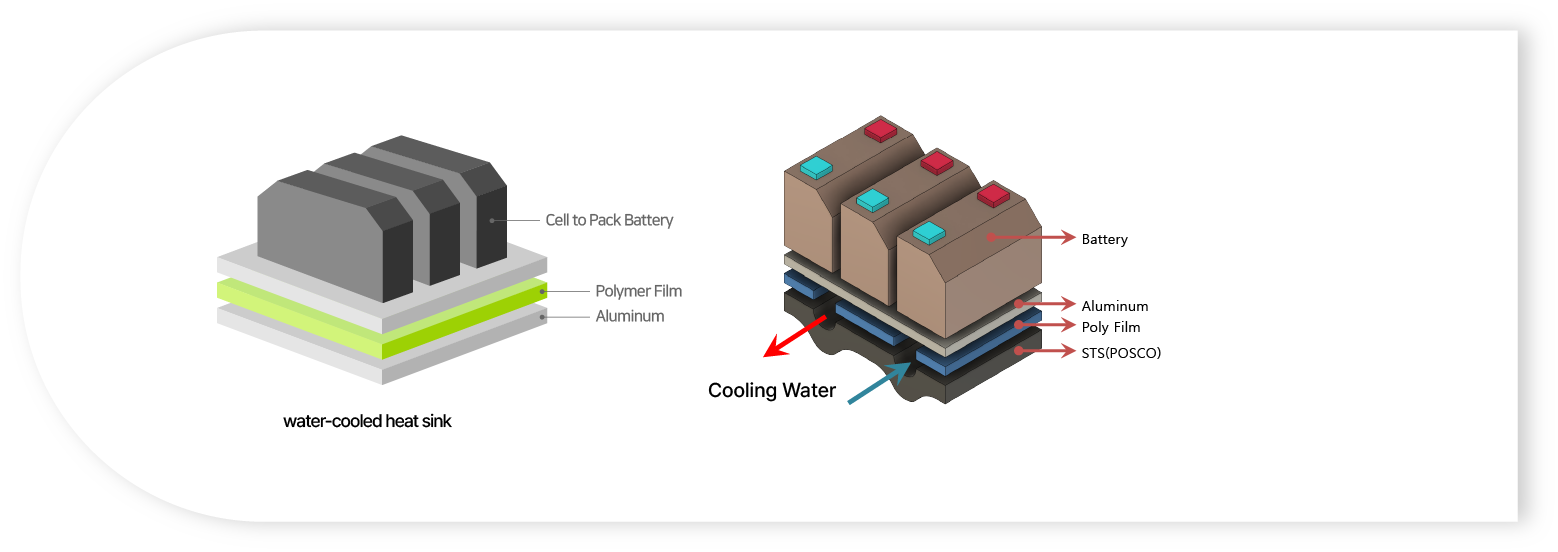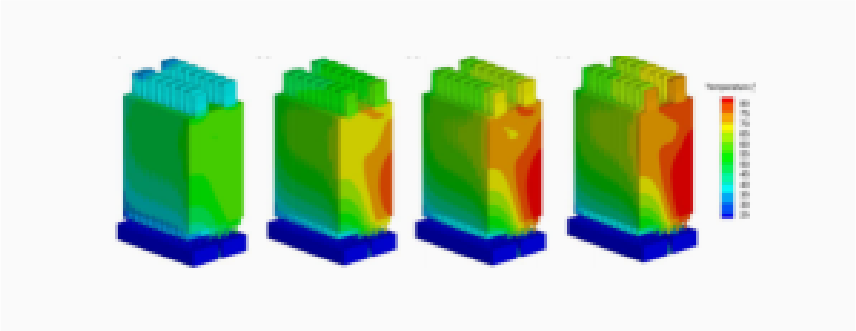Products
Product

Cooling effect through
rapid heat diffusion
product
description
Water cooling plate for electric vehicles
The continuous increase in electric vehicles is one of the most important pillars of low-carbon, green
growth, such as reducing greenhouse gas emissions. The biggest problem of electric vehicles is the
prevention of fire accidents and the extension of life of secondary batteries, which are power sources.
As of 2021, there were 68 cases of electric vehicle fire accidents in Korea, of which 40 cases were
caused by electrical factors, accounting for 58.82%.
To solve this problem in electric vehicles, we will develop an aluminum bonding polymer film using
polymer branding technology, which is our core technology, to solve the problem through conventional
laser welding, and to reduce the heat loss and fire accident probability of secondary batteries through
the development of aluminum water cooling plates for electric vehicles with price competitiveness and
excellent performance heat dissipation efficiency.

development
Ripple Effect of Water-Cooled Plate
Heat pipes used in battery packs in conventional electric vehicles do not produce sufficient cooling
efficiency and have a weight problem in electric vehicles with a lightweight trend.
The aluminum water cooling plate (Vapor Chamber) can store heat inside, put a movable fluid, and use the
evaporation of the fluid to dramatically increase the thermal conductivity, resulting in cooling effect
through rapid heat diffusion. In addition, according to the trend of lightening electric vehicles,
aluminum materials that are lighter than copper are used, which is suitable for the trend of lightening
electric vehicles.

product
FEATURES
Advantages of Water-Cooled Plate for Electric Vehicles
· Increased vehicle mileage by reducing the weight of the cooling device and reduced costs by
simplifying the manufacturing process of the cooling device.
· Improve the cooling efficiency of the battery by simplifying the flow directions of the multi-channel
and working fluid in the flow path through which the working fluid can flow.
· We want to improve the cooling module that can cool heat by attaching the battery pack that generates
heat during charging/discharging directly to the cooling block.
· Keep the battery pack in a temperature range of 20 to 40℃ and keep the temperature difference inside
the battery pack to a minimum (5℃ or less).


